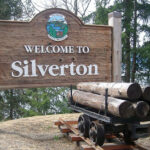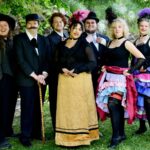Gerrard Trout respond to diminishing food supply
Gerrard Rainbow Trout spawning numbers are low this year, and that could be a good thing says a fisheries biologist.
“There is room here for both concern and optimism. Short term the numbers mean a period of time where trophy rainbow trout fishing will be poor,” said Forests Lands and Natural Resource Operations (FLNRO) senior provincial fisheries biologist Jeff Burrows.
“However, the numbers also mean that Kokanee predators are rapidly readjusting to feeding conditions, which will improve survival of Kokanee.”
The spawning run of the Gerrards is down this year after almost a decade of above average returns, said Burrows. The peak count — which is an indicator of the total number of spawners — was 188 on April 27, a count that was last seen in 2002 and in earlier times.
“In a nutshell, the abundance of larger Gerrards is much lower than a few years ago,” Burrows said.
The decline is a direct result of mortality from all sources over the last several years, he said.
“Mostly though, we think low Kokanee numbers in Kootenay Lake are causing larger Gerrards to be malnourished, and so for example they are likely dying at a higher than usual rate after spawning and not surviving to spawn again, or be available in the trophy fishery.”
The imbalance between Gerrard Rainbows and their primary adult food, the Kokanee, in the main lake became such a concern for residents and businessmen that the Balfour and District Business and Historic Association called a meeting in February to address the problem with ministry biologists and the public.
“The fishery impacts the whole lake, that’s the issue,” said association president Randy Zelonka who owns Gill and Gift in Balfour.
“Fishing has been terrible here for quite awhile.
“Our numbers have been beat all to hell this winter,” he said, noting there’s hardly any locals going out. “I’m not totally upset with the low Gerrard spawn, it may help with the Kokanee recovery.”
Meanwhile, ministry biologists promised at the meeting it would call a panel of experts to tackle the Kokanee recovery.
“We assembled a team, met in March, and finalized advice for Ministry decision last week,” said Burrows. “The Ministry will make and announce decisions by early June or sooner.”
Some early actions already taken include adjusting sport fishing daily quotas for Kokanee to zero per day from 15 per day, and rainbow trout daily quotas from 2 per day to 4 per day (1 over 50 cm still), in the main body of Kootenay Lake, effective on April 1.
“As well, the Ministry and the Freshwater Fisheries Society of BC have diverted 80,000 fertile Kokanee fry, intended for stocking in Thompson and Cariboo lakes for sport fisheries, to instead be stocked next week in Crawford Bay area creeks,” said Burrows.
“Anglers can help here by fishing, harvesting some rainbow, while following our regulations.
“Mismatches have occurred in the past, followed by recovery and there is no reason to believe this will not occur again.”
According to a Fish Bulletin update published this month by the ministry, the best case scenario for restoring the Kokanee/Gerrard balance would take less that one generation (two to three years).
Fry production has remained high and Kokanee food is abundant. Young Gerrards could be reduced by anglers.
The worst case, it said, would take two or more Kokanee generations (8 plus years). If predator numbers are slow to drop off and most young Gerrards remain unharvested, this could add pressure on the depressed Kokanee stocks.
It’s a different story in the West Arm of Kootenay Lake, however. Kokanee populations remain vibrant. Anglers have taken advantage of two week-long openings.
“They’re nice, fat, little Kokanee,” said Zelonka.


























Comments